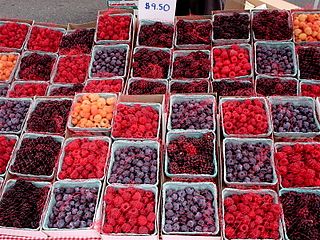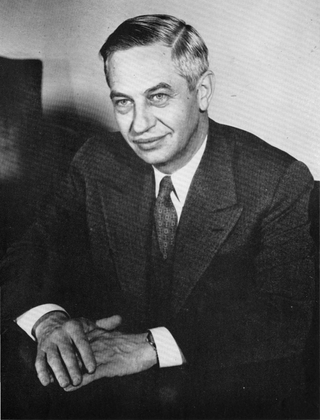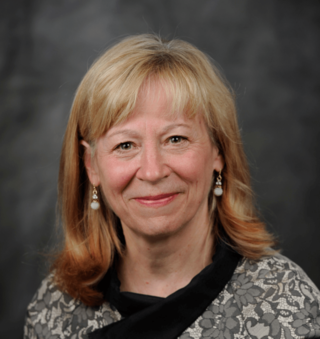Chemistry is the scientific study of the properties and behavior of matter. It is a physical science within the natural sciences that studies the chemical elements that make up matter and compounds made of atoms, molecules and ions: their composition, structure, properties, behavior and the changes they undergo during reactions with other substances. Chemistry also addresses the nature of chemical bonds in chemical compounds.
Quantum chemistry, also called molecular quantum mechanics, is a branch of physical chemistry focused on the application of quantum mechanics to chemical systems, particularly towards the quantum-mechanical calculation of electronic contributions to physical and chemical properties of molecules, materials, and solutions at the atomic level. These calculations include systematically applied approximations intended to make calculations computationally feasible while still capturing as much information about important contributions to the computed wave functions as well as to observable properties such as structures, spectra, and thermodynamic properties. Quantum chemistry is also concerned with the computation of quantum effects on molecular dynamics and chemical kinetics.

Linus Carl Pauling was an American chemist, biochemist, chemical engineer, peace activist, author, and educator. He published more than 1,200 papers and books, of which about 850 dealt with scientific topics. New Scientist called him one of the 20 greatest scientists of all time. For his scientific work, Pauling was awarded the Nobel Prize in Chemistry in 1954. For his peace activism, he was awarded the Nobel Peace Prize in 1962. He is one of five people to have won more than one Nobel Prize. Of these, he is the only person to have been awarded two unshared Nobel Prizes, and one of two people to be awarded Nobel Prizes in different fields, the other being Marie Curie.

Carl Bosch was a German chemist and engineer and Nobel Laureate in Chemistry. He was a pioneer in the field of high-pressure industrial chemistry and founder of IG Farben, at one point the world's largest chemical company.
Orthomolecular medicine is a form of alternative medicine that claims to maintain human health through nutritional supplementation. It is rejected by evidence-based medicine. The concept builds on the idea of an optimal nutritional environment in the body and suggests that diseases reflect deficiencies in this environment. Treatment for disease, according to this view, involves attempts to correct "imbalances or deficiencies based on individual biochemistry" by use of substances such as vitamins, minerals, amino acids, trace elements and fatty acids. The notions behind orthomolecular medicine are not supported by sound medical evidence, and the therapy is not effective for chronic disease prevention; even the validity of calling the orthomolecular approach a form of medicine has been questioned since the 1970s.

Phytochemicals are chemical compounds produced by plants, generally to help them resist fungi, bacteria and plant virus infections, and also consumption by insects and other animals. The name comes from Greek φυτόν (phyton) 'plant'. Some phytochemicals have been used as poisons and others as traditional medicine.

Lee Alvin DuBridge was an American educator and physicist, best known as president of the California Institute of Technology from 1946–1969.
Micronutrients are essential dietary elements required by organisms in varying quantities to regulate physiological functions of cells and organs. Micronutrients support the health of organisms throughout life.

Arthur Brouhard Robinson is an American biochemist, conservative activist, prominent climate change denier, and politician serving as Oregon State Senator from the 2nd District since 2021. He was the five-time Republican nominee for the United States House of Representatives for Oregon's 4th congressional district.

Friedrich Carl Duisberg was a German chemist and industrialist.

Herman Russell Branson was an American physicist, chemist, best known for his research on the α protein structure, and was also the president of two colleges. He received a fellowship from the Rosenwald Foundation.
Thomas Addis Jr. was a Scottish physician-scientist from Edinburgh who made important contributions to the understanding of how blood clots work. He was a pioneer in the field of nephrology, the branch of internal medicine that deals with diseases of the kidney. Addis described the pathogenesis of haemophilia in 1911 and was the first to demonstrate that normal plasma could correct the defect in haemophilia.
Roscoe Gilkey Dickinson was an American chemist, known primarily for his work on X-ray crystallography. As professor of chemistry at the California Institute of Technology (Caltech), he was the doctoral advisor of Nobel laureate Linus Pauling and of Arnold O. Beckman, inventor of the pH meter.

Ava Helen Pauling was an American human rights activist. Throughout her life, she was involved in various social movements including women's rights, racial equality, and international peace.

Bruceton is an unincorporated suburb of Pittsburgh within Allegheny County, Pennsylvania, United States. It is part of the Greater Pittsburgh metropolitan region. Its western half is part of South Park Township and its eastern half is part of Jefferson Hills.
Molybdenum deficiency refers to the clinical consequences of inadequate intake of molybdenum in the diet.
"Sickle Cell Anemia, a Molecular Disease" is a 1949 scientific paper by Linus Pauling, Harvey A. Itano, Seymour J. Singer and Ibert C. Wells that established sickle-cell anemia as a genetic disease in which affected individuals have a different form of the metalloprotein hemoglobin in their blood. The paper, published in the November 25, 1949 issue of Science, reports a difference in electrophoretic mobility between hemoglobin from healthy individuals and those with sickle-cell anemia, with those with sickle cell trait having a mixture of the two types. The paper suggests that the difference in electrophoretic mobility is probably due to a different number of ionizable amino acid residues in the protein portion of hemoglobin, and that this change in molecular structure is responsible for the sickling process. It also reports the genetic basis for the disease, consistent with the simultaneous genealogical study by James V. Neel: those with sickle-cell anemia are homozygous for the disease gene, while heterozygous individuals exhibit the usually asymptomatic condition of sickle cell trait.

The Demon Under the Microscope: From Battlefield Hospitals to Nazi Labs, One Doctor's Heroic Search for the World's First Miracle Drug is a 2006 nonfiction book about the discovery of Prontosil, the first commercially available antibacterial antibiotic and sulfanilamide, the second commercial antibiotic. Prontosil was the first commercially available antibacterial antibiotic (with a relatively broad effect against Gram-positive cocci. It was developed in the 1930s by a research team at the Bayer Laboratories of the IG Farben conglomerate in Germany. The discovery and development of this first sulfonamide drug opened a new era in medicine.

Geraldine Lee Richmond is an American chemist and physical chemist who is serving as the Under Secretary of Energy for Science in the US Department of Energy. Richmond was unanimously confirmed by the United States Senate to her role on November 5, 2021. In this position, she oversees the Office of Science, the Applied Energy offices, and 13 of the 17 Department of Energy national laboratories. Before this appointment, Richmond served as a Professor of Physical Chemistry and held the Presidential Chair in Science at the University of Oregon. Her research has focused on understanding the chemistry and physics of complex surfaces and interfaces, using laser-based experimental and theoretical computational methods. These understandings are most relevant to energy production, atmospheric chemistry and remediation of the environment. Throughout her career she has also worked to increase the number and success of women scientists in the U.S. and in many developing countries through the COACh program that she founded in 1999. She is a member of the National Academy of Sciences and the American Academy of Arts and Sciences. In recognition of her scientific achievements and contributions to women in science, she received the National Medal of Science from President Obama in 2013.











